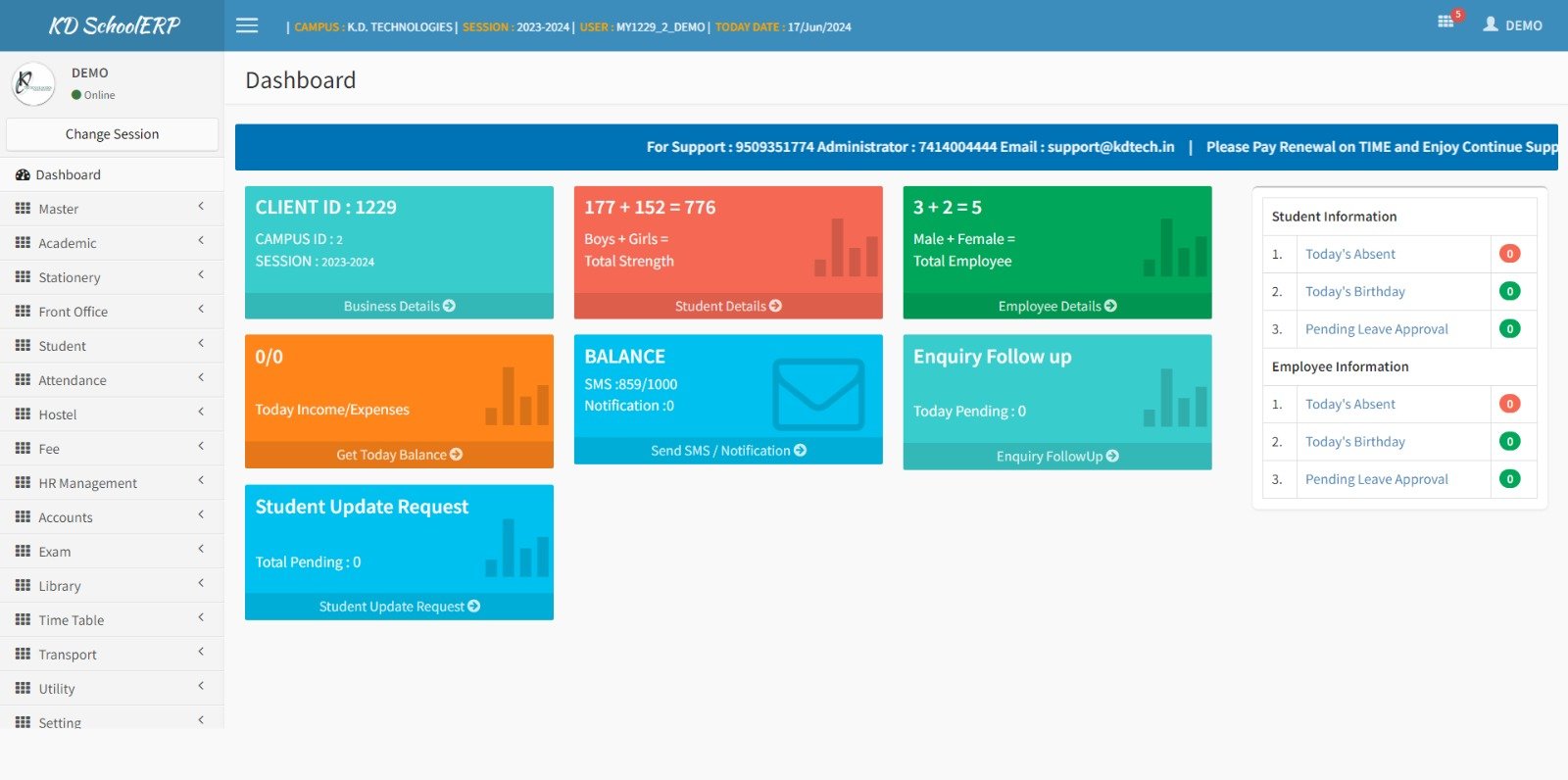School ERP is The Backbone of Educational Institutions: Itin Sharma
Educational institutions go beyond providing a learning experience; they serve as the pillars of society. However, with this responsibility comes challenges. From handling admissions and enrollments to managing records and tracking attendance, these institutions bear a data burden. According to a survey by the K.D. Technologies, teachers reported that they only spend 43% of their […]

Educational institutions go beyond providing a learning experience; they serve as the pillars of society. However, with this responsibility comes challenges. From handling admissions and enrollments to managing records and tracking attendance, these institutions bear a data burden. According to a survey by the K.D. Technologies, teachers reported that they only spend 43% of their time on teaching; the rest was dedicated to administrative tasks, grading, and reporting. This means that valuable time and effort are being diverted from research and teaching. Therefore, the implementation of technologies like school ERP systems can offer a transformative solution. These systems assist schools and colleges in managing tasks and streamlining processes, ultimately creating an environment that fosters effective learning.
What is a My School ERP System, and Why is it Important?
ERP stands for Enterprise Resource Planning. In educational institutions, this system is designed to maintain records of day-to-day activities and process data. It encompasses features such as attendance tracking, fee records management, exam result publication, admissions management, and so much more. Given that educational institutions accumulate vast amounts of data, it can be challenging to track and manage efficiently. However, ERP systems play a role in integrating departments and functions creating a centralized hub for managing student data, storing resources, and organizing daily activities. These systems automate processes, resulting in enhanced data management, organization, and communication within institutions.
Advantages of Using a School ERP System
- Simplified admissions process: By automating tasks, ERP systems significantly reduce the need for manual efforts. Important tasks like student assessments, attendance management, and fee collection are efficiently handled through platforms integrated into the ERP system. As a result, workflows become faster and more efficient as redundant tasks are minimized.
- Real-time data accessibility: With a school ERP system in place, all departments gain real-time access to data. This enables faculty members to analyze information for decision-making and planning purposes.
- Cost benefits: The automation of tasks leads to improved efficiency within institutions using ERP systems. Consequently, costs can be reduced as funds are no longer allocated towards completing tasks. Moreover, automating procurement processes can result in cost savings related to goods and services. Stats show that a school ERP system can reduce the cost of materials by 80%.
- Improved communication and collaboration: Thanks to the nature of ERP systems, educational stakeholders can easily access information, leading to collaboration among educators, administrative staff, parents, and students. Additionally, the built-in communication module within the system makes it effortless for parents and teachers to interact.
- Resource management: School ERP systems come equipped with modules that allow for easy tracking of inventory, resource management, and scheduling resource utilization in classrooms. This plays a role in planning resources and swiftly resolving any issues that may arise.
- Remote Accessibility: With the popularity of remote learning increasing, having access to educational resources from anywhere is a huge plus. This type of flexibility is possible since the majority of ERP solutions are cloud-based.
- Effortless Fee Management
Managing fees and financial transactions becomes a breeze with a School ERP system. Online payment options streamline fee collection, reducing administrative overhead, minimizing errors, and enhancing transparency for both the school and parents.
- Parental Involvement
School ERP systems often include parent portals that empower parents to actively participate in their child’s education. They can access grades, assignments, and communicate with teachers, leading to greater parental involvement and support in the learning process.
- Custom Reporting
School administrators can harness the power of data with custom reports and analytics. By tailoring reports to specific needs, they gain valuable insights into various aspects of school operations, enabling data-driven decision-making for continuous improvement.
- Paperless Administration
By reducing reliance on paper-based processes, School ERP systems contribute to environmental sustainability. This shift not only benefits the planet but also simplifies document retrieval, storage, and archiving for administrators.
- Secure Data Management
School ERP systems prioritize data security through robust encryption and access controls. This ensures the protection of sensitive student and school information, keeping it safe from unauthorized access and complying with data protection regulations.
Why is School ERP the Future?
Experts believe that ERP systems represent the future of educational technology for a number of compelling reasons.
- Change-Adaptive: Scalable and customized ERP solutions are available today. These systems don’t require a whole revamp in order to adapt when educational trends and requirements change.
- Ecologically sound: Digitization lessens the demand for paper, making educational procedures more ecologically sound.
- Analytical Insights: ERP systems have analytical capabilities that assist schools in deciphering trends, such as student performance trajectories or regions that require budgetary attention. Making better educated decisions may benefit from this.
- Global Trends: As more educational institutions across the world use these solutions, there is a common knowledge base and a cooperative effort to hone and enhance these systems.
Implementation of School ERP Systems
Educational institutions are increasingly adopting school ERP systems due to the streamlined processes and benefits they offer both inside and outside the classroom. For instance, Hans Group of Education, Kotputli successfully implemented MY SCHOOL ERP system to support its financial and HR operations across 8 campuses, creating more simplified systems and better user experience. Another example is Takshila Group oif Institutions, Behror an educational institution consisting of 5 Units. The use of outdated tools had been posing challenges for them until they started using the MY SCHOOL ERP system. With this system in place, they were able to implement an admission process, streamline enrollment procedures, efficiently manage data, and create a hybrid learning environment within their institution. The success stories of these schools and educational institutions demonstrate the trend of using school ERP systems to improve efficiency.
Future Prospects and Innovation
As technology continues to evolve, so do School ERP systems. Innovations such as mobile applications, AI-driven analytics, IoT (Internet of Things) integration for smart classrooms, and virtual learning environments are transforming the educational landscape. At KD Technologies, we are committed to staying at the forefront of these advancements, partnering with educational institutions to tailor solutions that meet their unique needs and propel them towards greater efficiency and excellence.
Conclusion
In conclusion, School ERP systems have revolutionized educational management by centralizing operations, improving communication, empowering data-driven decision making, enhancing parental engagement, and ensuring data security. As the owner of KD Technologies, I am proud to witness the positive impact of our solutions on educational institutions worldwide. By embracing technology responsibly and innovatively, we can create a brighter future where every student has access to a seamless and enriching learning experience.










